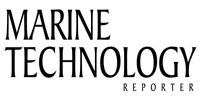
Page 13: of Marine Technology Magazine (July 2025)
Read this page in Pdf, Flash or Html5 edition of July 2025 Marine Technology Magazine
here are enormous technological challenges in access- produce high resolution hydrographic pro? les with a station- ing and sampling hadal depths, but the recent surge ary bottom platform (moored mode), for observing diversity in in the development of deep-ocean technologies rang- benthic zones to hadal depths. The system integrates standard
Ting from ocean landers, remotely operated vehicles oceanographic instruments with energy-conserving strategies (ROVs), and human-occupied vehicles (HOVs) has allowed to obtain optimal performance within mission constraints. To the oceanography of trenches to be addressed. achieve these objectives, the Chilean research team leveraged
Ocean landers are a cost-effective class of autonomous un- open-source hardware components, such as Arduino micro- manned underwater vehicle that possess a unique capacity for controllers, expansion boards, and open software tools, sig- exceptionally quiet, extended stays on the sea? oor, studying ni? cantly accelerating the development process.
benthic communities and environments by in-situ sensing and sampling. Multiple landers can be used to survey large areas
Data Acquisition and Control (DAC) system from a modest vessel using different search strategies.
The design of the DAC system is based on the Atmega 2560,
Recent developments with ocean landers at the Universidad a microcontroller board with 54 digital input/output pins (of de Concepción in Chile have shown they are capable of col- which 15 can be used as PWM outputs), 16 analog inputs, 4 lecting water samples at chosen depths, as well as downcast UARTs (hardware serial ports), and a 16 MHz crystal oscil- and upcast conductivity-temperature-depth plus dissolved- lator. A compact version of the classic Arduino Mega, Me- oxygen (CTD-O) pro? les to hadal depths.
ga2560-Core, provides a board that can run on 3.3V, draw-
Ocean landers currently see limitations related to their data ac- ing approximately 18 mA. The Mega2560-Core, along with quisition and control (DAC) systems. Most are controlled using commercial breakout boards and individual components, pro- acoustic systems operated from a surface vessel or pre-set count- vide a robust and ? exible platform for data acquisition and down timers. In many applications, commercial sensors are of- control. The Mega2560-Core can enter sleep mode with a ten unnecessarily operated at their maximum sampling rates current consumption of less than 0.18mA. A key strategy to throughout the entire mission, depleting critical battery power. conserving power is using the Mega2560-Core to switch the
Chilean marine researchers have derived a hybrid design for power-hungry CTD on and off, and adjust its sampling rate. an autonomous DAC system that combines the capability to The Mega2560-Core consumes only 1.7% of the power used www.marinetechnologynews.com 13
MTR #5 (1-17).indd 13 MTR #5 (1-17).indd 13 7/30/2025 9:24:25 AM7/30/2025 9:24:25 AM

 12
12

 14
14
